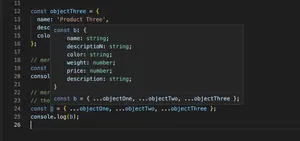Introduction
Manipulating the DOM with TypeScript enhances code readability and maintenance. The element.remove() function represents a straightforward way to remove elements from the DOM, making the management of web page content more fluid and responsive.
In modern web development, managing DOM elements dynamically is a common necessity. TypeScript, as a superset of JavaScript, allows for safer and more predictable manipulation through its type system. In this guide, we delve into the element.remove() method in TypeScript, showcasing its utility with detailed examples.
Examples
Before diving into examples, it’s crucial to understand that element.remove() directly removes the callee from its parent node in the DOM. This implies that you do not need to reference the parent element explicitly to perform the removal.
Basic Example: Removing a Button
Consider a page with a “Delete” button that should disappear once clicked:
document.getElementById('deleteButton').addEventListener('click', function() {
this.remove();
});
This example attaches an event listener to a button. When clicked, the button itself calls the remove() function, leading to its removal from the DOM.
Conditionally Removing Elements
Sometimes, elements should only be removed under certain conditions. Let’s enhance our button removal logic with a confirmation dialog:
const button = document.getElementById('confirmDeleteButton');
button.addEventListener('click', function() {
if (confirm('Are you sure you want to delete this item?')) {
this.remove();
}
});
This code demonstrates a method to incorporate user confirmation before removal, adding an extra layer of interaction and safety.
Advanced Example: Removing Multiple Elements
Advanced scenarios might require removing multiple elements simultaneously. The following demonstrates how to select and remove multiple elements with a specific class name:
document.querySelectorAll('.itemToDelete').forEach(item => {
item.remove();
});
This code selects all elements with the class itemToDelete and removes them individually within a forEach loop. This method is particularly useful for handling lists or collections of elements that need to be dynamically managed.
Combining TypeScript with element.remove() for Safer DOM Manipulation
TypeScript’s type system can significantly enhance the reliability of DOM manipulation. Here’s an example of how you might ensure safer operations by checking an element’s existence before attempting to remove it:
const safeRemoveElement = (selector: string): void => {
const element = document.getElementById(selector);
if (element) {
element.remove();
}
};
safeRemoveElement('idToRemove');
This function, safeRemoveElement, avoids potential runtime errors by verifying the element’s presence in the DOM before proceeding with removal. This technique underscores TypeScript’s ability to bolster code safety and robustness.
Conclusion
The element.remove() method offers a simple yet powerful way to manipulate DOM elements dynamically. Throughout this guide, we’ve explored various scenarios—from basic implementations to more complex, conditional situations— showcasing how TypeScript can be employed to make DOM manipulations both effective and safe. Embracing these techniques will undoubtedly enhance your web development projects, enabling more interactive and dynamic user interfaces.
